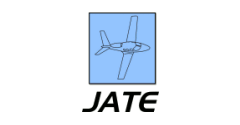Abstract
Purpose: The purpose of this study was threefold: (1) to investigate wildlife strike reporting trends in Part 139 airports in the state of Florida (2011–2020); (2) to evaluate the existence of a difference in the rate of reported wildlife strikes between the seasons of the year (2011–2020); and (3) to develop information based upon the data analyzed that can be used for the safety management of wildlife hazards in Florida.
Design/methodology: The researchers in this study answered the research questions through the analyses, revision, and evaluation of existing wildlife strike and aircraft operations data. The data analyzed in this study were collected between May 1 and May 20, 2021. The researchers used the Federal Aviation Administration Air Traffic Activity System and the National Wildlife Strike Database to collect information on aircraft operations and reported wildlife strikes, respectively.
Findings: There were 8,977 and 458 wildlife strikes and damaging strikes, respectively, at and around Part 139 airports in Florida from 2011 through 2020. The majority of strikes (62.6%) and damaging strikes (62%) occurred during the arrival phases of flight. The number of strikes increased almost 37% from 2011 (N 5 614) to 2020 (N 5 837). Additionally, the number of strikes per 100,000 aircraft operations (wildlife strike index) increased from 18.6 to 28.62 during the same period. Aggregate data indicated the risk of strikes is higher during the fall and summer seasons of the year.
Originality/value: This study provides valuable information by addressing a gap in published wildlife strike government reports and studies using wildlife strike and aircraft operations data at a regional level. Information obtained from the scientific analyses of wildlife strike data is vital for effective wildlife hazard management programs of aviation stakeholders. Findings of this study can be used by airport operators to improve their wildlife strike mitigation efforts. Also, findings can provide the empirical foundation for integrated research and the development of national and regional standards to enhance aviation safety.
Recommended Citation
Dikerts de Tella, Tiago and Mendonca, Flavio A. C.
(2022)
"Safety Management of Wildlife Hazards to Aviation: An Analysis of Wildlife Strikes in Part 139 Airports in Florida 2011–2020,"
Journal of Aviation Technology and Engineering:
Vol. 11:
Iss.
2, Article 3.
Available at: https://doi.org/10.7771/2159-6670.1257


